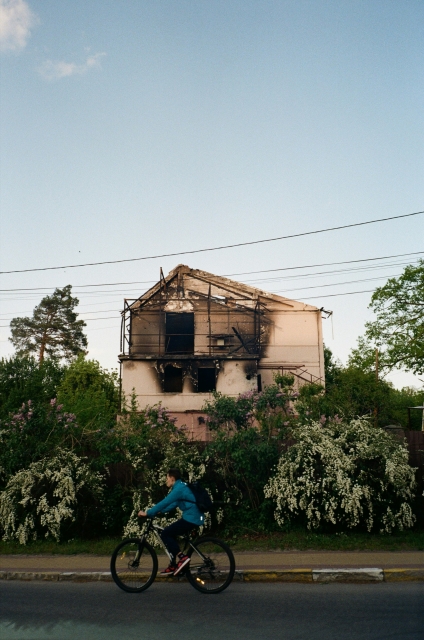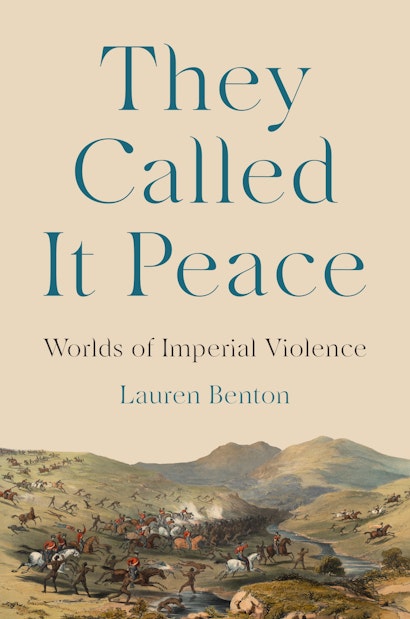Historians are supposed to feel lucky when our new books align closely with topics prominently in the news. I would welcome a little less relevance for They Called It Peace: Worlds of Imperial Violence. As I was writing the book, Russia invaded Ukraine. Then the war in Gaza exploded, just a few months before the book’s publication. Sharp accounts of suffering and loss in both conflicts carry disturbing echoes of the imperial past.
I did not set out to make these connections when I began the project. My motivations were more personal, and more scholarly. In a career writing about the legal history of empires, I had paid more attention to imperial rule than to violence, and I set out to correct that imbalance. I also wanted to enlarge the field of international law. Most studies about law and war spotlight the late-nineteenth century, when the laws of war were codified, or start in the mid-twentieth century, when international institutions outlawed major wars. I wanted to shift the focus further back, to the half-millennium of global empire building before the dawn of the twentieth century.
Instead of confining my attention to the writings of theologians and jurists on war, as many historians of international law do, I set out uncover the legal practices of war. I dove into accounts of “small” violence in and on the edges of empires. I read about raids, sieges, and campaigns of conquest. I examined participants’ accounts of massacres alongside treatises on peace. I pored over letters from European commanders and analyzed Indigenous complaints about Europeans’ conduct in war. I surveyed the context in which anti-imperial warriors were labeled as rebels or enemies.
Gradually, a picture emerged of a state of perpetual war interrupted by bouts of unstable peace. Represented later by international lawyers as chaotic and lawless, colonial wars in fact followed clear, predictable, legal pathways. Most disturbingly, I found that routines created to limit violence, such as signing truces or instructing commanders to favor brief strikes, could set in motion processes leading to atrocities.
I first became acutely aware of these patterns in reading about the era that historians used to refer to as the Reconquest. I profited from a rich, new vein of research revising the history of Christian-Muslim violence in Iberia. An “ah ha” moment occurred when I read a book by a Spanish historian, Dolores María Pérez Castañera, cataloguing an astonishing 74 truces signed by Catholic monarchs and rulers of Granada in the 150 years before the 1492 conquest of Granada. A long phase of intermittent violence and gradual conquest was structured as a series of negotiations over the terms of fragile peace.
The serial truces set up transitions from war to low-level, peacetime violence and back to war again. Truces, in fact, guaranteed more war. Most were designed to last for a fixed number of years, usually for the lifetime of the signers. Many truces broke down before they officially ended, when one side declared that escalating violence had reached intolerable intensity or when raiders turned opportunistically from plunder to permanent occupation of seized territories.
In Iberia and elsewhere, the end of truces could lead directly to spectacular violence against innocents. Accusations that one party to a truce had violated its terms filled opponents with murderous indignation, and the next strikes often landed with extraordinary force. Aggressors who styled themselves as peace makers authorized brutal reprisals against civilians.
Other chilling patterns surfaced in my research. In the long nineteenth century, imperial armies and navies sprawled across the globe, with metropolitan governments instructing captains and commanders to use limited force to protect imperial subjects and warning them not to start major wars. Officers were left to make their own choices about when, against whom, and how forcefully to strike. From British navy captains in the Pacific to horseback militia leaders in Latin America, commanders decided on the spot to “punish” locals for perceived transgressions. They acted both arbitrarily and under cover of law, carrying out improvised investigations and ad hoc trials. They penned reports describing small strikes and massacres alike as necessary measures to protect imperial subjects.
Some of this history is familiar, but I found myself writing about it in new ways because I was paying close attention to law. I emphasized the ways that legal instruments like truces choreographed conquest. I examined how legal practices seemingly far from battlefields, such as the exercise of authority in households, helped to sustain war. I highlighted how imperial agents used legal language and rituals to justify interventions and calibrate measures short of war.
As events in Gaza and Ukraine have unfolded, I have been struck by continuities in imperial forms and language. Desperate pleas for truces and cease-fires coexist with knowledge that these instruments hold sharp risks for vulnerable populations. An imperial language of protection lingers, as in Putin’s portrayal of Russia’s aggression as “special military operation” to “protect” ethnic Russians. Other traces of imperial influence seem to pop up regularly in accounts of wartime strategies and justifications.
I know that history cannot tell us how to end these conflicts. But recognizing the contradictions and continuities of imperial violence may help us identify old mistakes—and avoid hubris. History teaches skepticism when it comes to optimistic claims about the capacity to keep small wars small or limit their awful effects (though there may be no alternative to trying). They Called It Peace warns against following those who confidently assert the right to punish non-combatants as peace breakers.
I come back to Tacitus, in the end: “To ravage, to slaughter, to usurp under false titles, they call empire; and where they make a desert, they call it peace.”
Lauren Benton is the Barton M. Biggs Professor of History at Yale University and recipient of the Toynbee Prize for significant contributions to global history. Her books include A Search for Sovereignty: Law and Geography in European Empires, 1400–1900 and (with Lisa Ford) Rage for Order: The British Empire and the Origins of International Law, 1800–1850.

